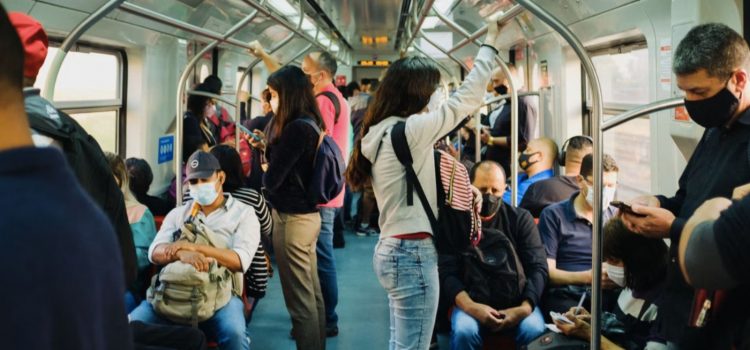

This article is an excerpt from the Shortform book guide to "Invisible Women" by Caroline Criado Perez. Shortform has the world's best summaries and analyses of books you should be reading.
Like this article? Sign up for a free trial here .
Why are women often harassed on public transportation? What is the solution to this problem?
Caroline Criado Perez believes that women don’t report sexual harassment on public transit because it ultimately won’t solve the problem. This is because men predominantly run public transit and are less likely to be harassed, so no system is in place to reduce harassment.
Continue reading to learn why harassment on public transportation is an ongoing problem.
How the Gender Data Gap Affects Women on Public Transportation
To illustrate how the gender data gap affects women’s safety in daily life, Perez in Invisible Women points to a ubiquitous feature of many women’s lives: public transit.
As we’ve seen, Perez argues that thanks to the gender data gap, many products work for the average man but not the average woman. The same is true of systems. Notably, many public transit systems don’t adequately protect women: Several statistics indicate that these systems aren’t equally safe for men and women because women are far more likely to experience sexual harassment on public transportation than men are.
But why don’t public transit systems adequately protect women? Perez believes this is because of a gender data gap that reinforces the male-as-default mindset: Women who are sexually harassed on public transit don’t report the crime.
Perez asserts that women don’t report harassment on public transit for two main reasons. First, women don’t know how to report it: Few transit systems make clear what to do if someone harasses you while you’re using their service. Second, women who do report often have poor experiences. She cites the case of one Indian woman whose bus driver kicked her off for disrupting other riders when she shouted at the man who groped her.
In this way, Perez contends public transit systems’ failures to provide adequate reporting procedures results in a gender data gap: Public transit agencies don’t have data indicating that women are less safe on public transit than men are official statistics suggest that men are more likely to be victimized in public. Moreover, the people who run these agencies are usually men, so they believe these statistics: They’ve likely never been harassed on public transit, so they don’t have the life experience that suggests these statistics might be wrong. This lack of knowledge is also a manifestation of a gender data gap.
Therefore, because the men who run public transit systems can’t see the need for measures that protect women from harassment, they don’t implement them. In other words, they continue to believe that their transit system is safe for the average person (both male and female) because they never get data that indicates otherwise. In this way, the gender data gap ultimately reinforces the male-as-default mindset—and with it, transit systems that harm women’s safety.
Why Public Transit Responses Don’t Work: Examining Japan’s Response
Even when people accept that women aren’t as safe on public transit as men are, the response of public transit agencies and the public still reflects several of the issues that Perez pinpoints. We can see how this manifests by examining a country that’s been dealing with a specific sexual harassment issue on public transportation for decades: Japan.
In Japan, unlike many other countries, public transit agencies did have data that they had a harassment problem—specifically chikan, or people who grope or take explicit photos of women on the train. In 2004, police received over 2,000 complaints regarding chikan and recommended that the transit agencies take action. The agencies complied, and many train lines now have women-only cars. Despite these changes, studies indicate that 75% of Japanese women have encountered chikan.
Why might this be? Chikan who don’t get caught may continue assaulting women—and the reality is that women still face the difficulties Perez points out when reporting assaults despite cultural acceptance of the chikan as a problem. The Japanese system makes it relatively clear how to report chikan; however, in a crowded environment, it’s often difficult to pinpoint who has groped you and to keep track of him. One rail company did introduce an app so that victims could report the assault by tapping a button and have staff at the next station catch their assaulter—but not until 2020, six years after it published its main app that showed everything from train schedules to air conditioning information on train cars.
Similarly, as Perez suggests, Japanese women don’t report chikan because when they do report, they have poor experiences: In fact, 90% of Japanese women who encounter chikan don’t report their assault because they worry they won’t be believed. And while you won’t get kicked off a train for reporting chikan in Japan, these poor experiences can be extreme in other ways. In 2017, two men accused of assault tried to escape onto the train tracks and died as a result. In response to these deaths, one insurance company introduced a policy against “false groping accusations for men”—suggesting a cultural mindset that argued that these men’s deaths were the fault of their sexual assault victims.
It’s also possible that Japanese women continue to encounter chikan despite the transit agencies’ efforts because these efforts are inadequate. Many women don’t use women-only train cars because they’re usually at the far ends of the train and are thus hard to get to. Moreover, these cars are only reserved for women during rush hour—and even then, men are not expressly forbidden from boarding them: They’re just asked not to board them.
While the men who run transit agencies admit there’s a harassment problem because they’ve implemented women-only cars, men who ride the cars are less receptive. Many contend that having women-only cars is a form of discrimination against them and ride them anyway, leading several Japanese women to request a change in policy that allowed train staff to remove men from women-only cars. Moreover, these men have asked for male-only cars to protect them against false accusations of groping, although transit companies have yet to oblige.

———End of Preview———
Like what you just read? Read the rest of the world's best book summary and analysis of Caroline Criado Perez's "Invisible Women" at Shortform .
Here's what you'll find in our full Invisible Women summary :
- How society's male-as-default mindset leads to a gender data gap
- Why cars don't properly protect women during accidents
- Why we don’t know how most medicines affect women






